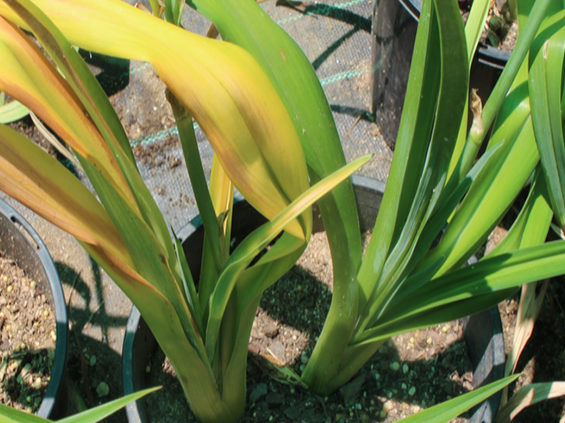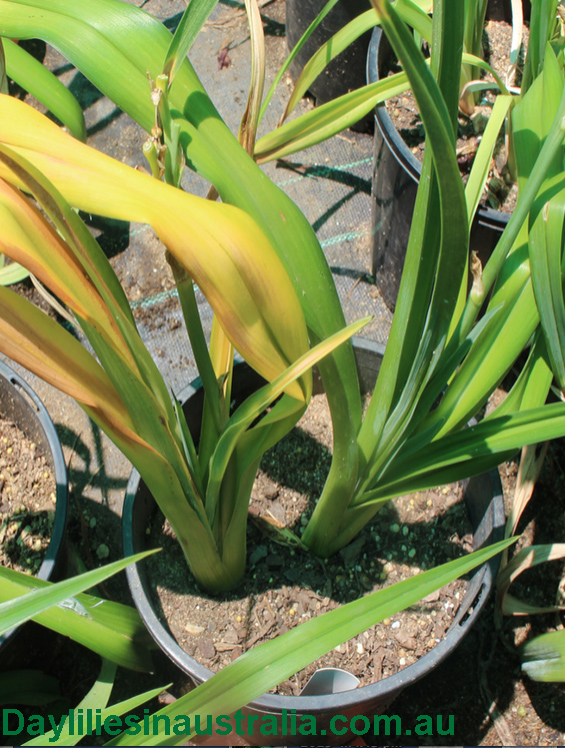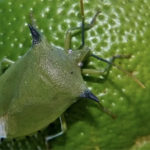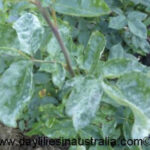
Soil Borne Bacterial and Fungal Pathogens
Daylilies Diseases Fungal Pathogens Australia
 Can happen to even the most caring, diligent gardener can have bad luck when trying to establish growth in areas where disease lurks. Soil borne disease is usually the cause of unsuccessful gardening ventures for those having no luck no matter what they try. Soil borne daylilies Diseases Fungal Pathogens is caused by close to invisible microorganisms that live and migrate throughout the soil. Unfortunately, most of the land in Australia has some form of soil borne pathogens. These types of diseases are customarily detected after it is too late to save the plants. The presence of a pathogen, a host and optimal environmental conditions allow disease to spread in the soil. These pathogens, or microorganisms, can remain in the ground for long periods of time and may lie dormant until a host or the conditions present themselves. The amount and type of pathogens depends on a complex interaction of different elements which include sunlight, temperature, moisture, nutrients and soil pH. Disease can be native to the soil or brought on by flood with contaminated water or sewage, animal droppings, manure application or deliberate contamination for biological control purposes. Leaves turning yellow and/or black spots are common indicators of the presence of disease. However, it presents (daylilies Diseases Fungal Pathogens) it can wreak havoc and frustrate even the most patient gardener.
Can happen to even the most caring, diligent gardener can have bad luck when trying to establish growth in areas where disease lurks. Soil borne disease is usually the cause of unsuccessful gardening ventures for those having no luck no matter what they try. Soil borne daylilies Diseases Fungal Pathogens is caused by close to invisible microorganisms that live and migrate throughout the soil. Unfortunately, most of the land in Australia has some form of soil borne pathogens. These types of diseases are customarily detected after it is too late to save the plants. The presence of a pathogen, a host and optimal environmental conditions allow disease to spread in the soil. These pathogens, or microorganisms, can remain in the ground for long periods of time and may lie dormant until a host or the conditions present themselves. The amount and type of pathogens depends on a complex interaction of different elements which include sunlight, temperature, moisture, nutrients and soil pH. Disease can be native to the soil or brought on by flood with contaminated water or sewage, animal droppings, manure application or deliberate contamination for biological control purposes. Leaves turning yellow and/or black spots are common indicators of the presence of disease. However, it presents (daylilies Diseases Fungal Pathogens) it can wreak havoc and frustrate even the most patient gardener.
Types Daylilies Diseases Fungal Pathogens
There are several types of soil borne pathogens like nematodes and viruses, but the most common types of infestation are from bacterial and fungal microorganisms. Most soil diseases are caused by some type of fungus. An astounding 8,000 fungi species around the world give those working with plants and the earth a hard time. They infect our plants, or the host, by killing their cells and/or causing stress. Fungi are responsible for diseases like Downy and powdery mildews. Root rot is another disease caused by fungal pathogens in which the roots of plants become dark brown or black, mushy to the touch and easily fall apart or break off. This occurs because the diseases blocks off the plants ability to uptake water and nutrients. Soil borne bacterial pathogens are less common in comparison to fungal microbes. They are very resistant to the outside environment, mostly form through spores and only become active when there are conducive factors that allow them to multiply. Bacterial pathogens do not directly penetrate plants but may enter through wounds or natural openings in the plants. Erwinia, also known as soft rot, is a type of bacterial pathogen. The fungi and bacteria attacks their host’s tubers, crowns, corms, bulbs, rhizomes, buds, stems and stalk tissues. The tissue becomes a soft, watery mush that the bacteria can then feed on. The fungi and bacteria, like your plants, just want to survive but their survival is a detriment to our gardens.
What can you do to Prevent Soil Borne Pathogens?
There are steps you can take to help defend against and prevent soil borne pathogens from affecting your plants. Sanitisation is one of the most important ways to keep disease from spreading. It is best to thoroughly clean all the tools and equipment you use to work in your garden. You can also change the area in which you grow certain plant types each season. Fungal problems can be treated with sulfur or copper. If the daylily plant is infected the soil is infected too with fungal pathogens you must get rid of the soil as well as the plant. Whatever you do, do not panic things will get better with a few improvements to your process. Daylilies suffer from bacterial crown and root rot during summer and early autumn in Australia, due to the daylily plant being stressed from too many long hot dry summer days over 35 C our daylily plants put it in hard. One way of helping this is not to water the daylilies too often in these hot conditions, once a week is enough in this hot weather otherwise you will kill the daylilies with kindness and they will rot if you water them every day or two. At Decadent Daylilies Daylily Nursery our daylily plants are dipped for crown and root rots before they are dispatched to their new owner as this is the number one killer in daylilies.


























